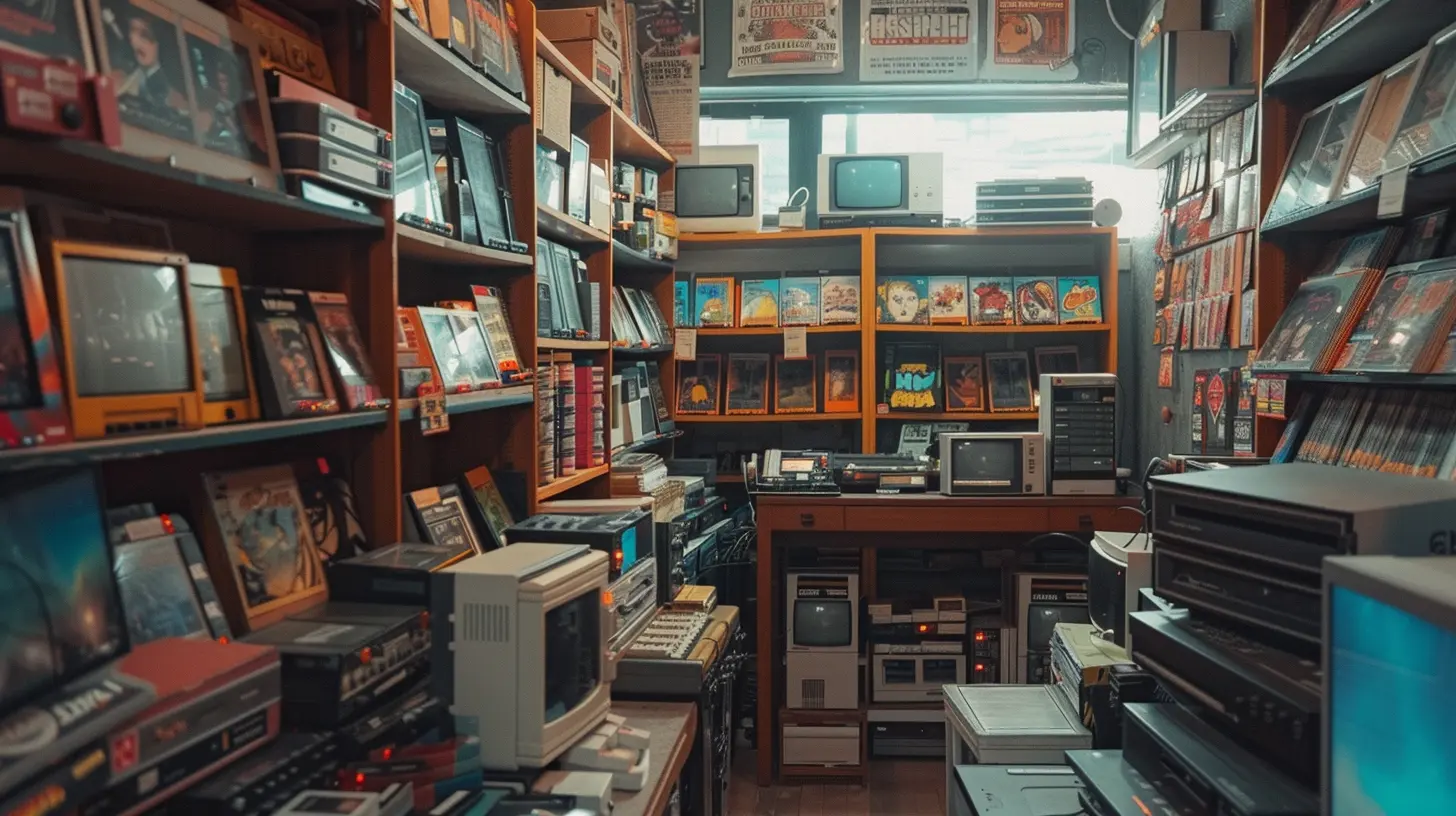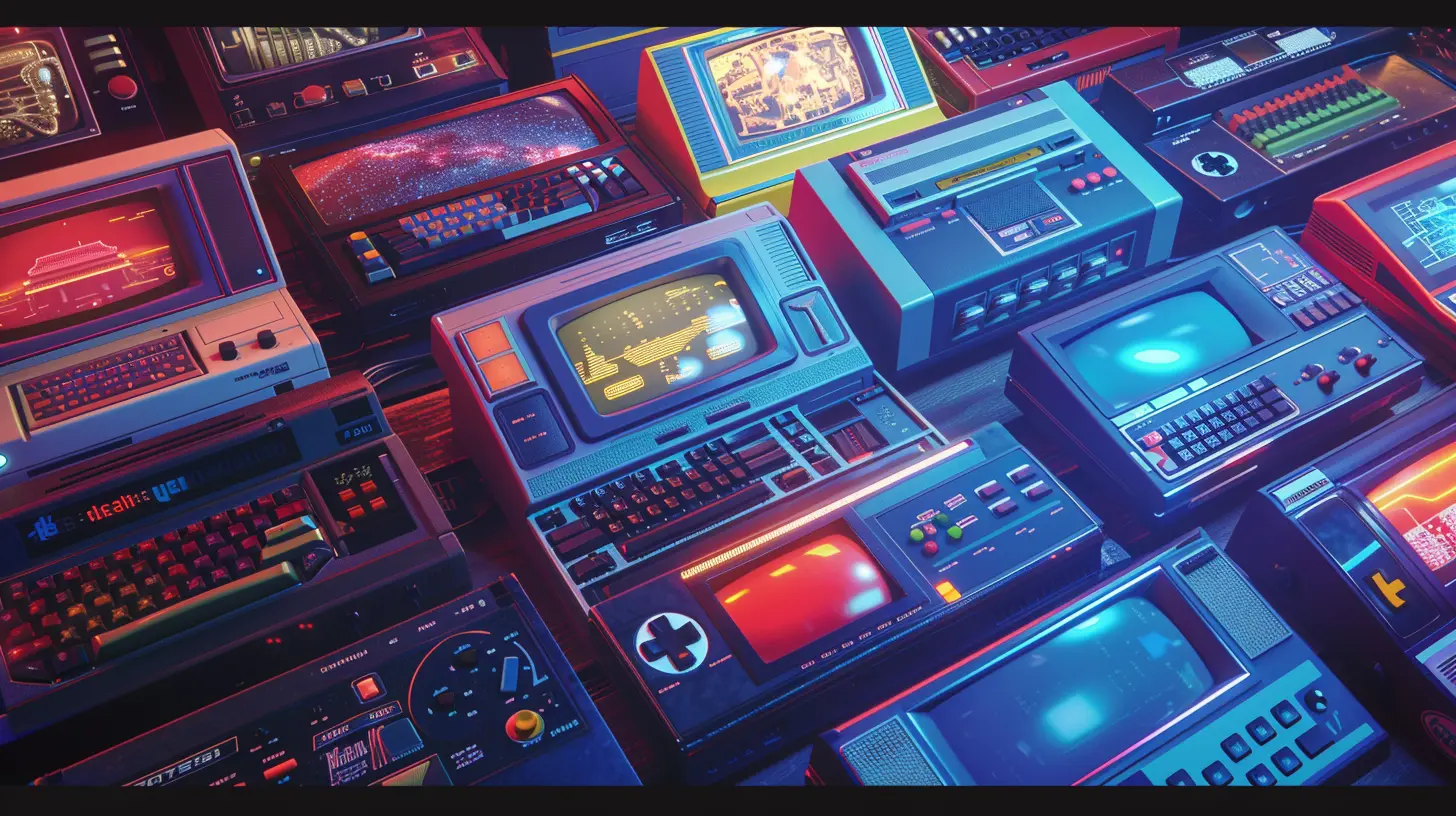From Retro to Modern: How Speedrunning Spans Decades of Gaming
12 October 2025
Walk into any gaming community, and you'll hear whispers (or shouts) about speedrunning. It's not just a niche hobby anymore — it's an entire subculture of gaming that’s grown from pixelated jumps in 8-bit worlds to globe-spanning leaderboards for AAA open-world titles. Whether you’re a casual gamer or someone who’s clocked thousands of hours on Twitch, speedrunning has a weirdly magnetic charm, doesn't it?
Let’s take a deep dive into how speedrunning has evolved from the retro days to the modern era. Grab your warp whistles and wrist-mounted menus — this is going to be a wild, fast-paced ride.
What is Speedrunning, Anyway?
Alright, let’s start with the basics. Speedrunning is the art (yes, art!) of beating a video game as quickly as possible. No grinding, no side quests, just the main objective — done with laser-sharp precision and often mind-blowing tricks.There are tons of categories:
- Any% (finish the game with whatever methods necessary — glitches welcome)
- 100% (complete everything the game has to offer)
- Glitchless (play the game normally, but fast)
Speedrunners often record their runs and submit them to sites like Speedrun.com or show off their skills during live charity events like Games Done Quick.
But how did speedrunning become such a massive part of the gaming world?
Back in the Day: Speedrunning’s Retro Roots
Let’s rewind the tape — literally — to the 1980s and 90s. Gaming culture was obviously different back then. No online leaderboards. No frame-by-frame breakdowns. Just you, your controller, and probably a CRT TV that weighed more than your dog.The Arcade Mentality
Speedrunning’s DNA can actually be traced back to arcades. High scores were everything. Just like people competed for points in Pac-Man or Donkey Kong, others tried to beat games faster and more efficiently. It was about dominance and bragging rights. If you could beat a game on one quarter — and fast — you were basically a local legend.Console Games and VHS Recordings
Then came the NES era, which brought speedrunning into the living room. Games like Super Mario Bros., Metroid, and The Legend of Zelda became breeding grounds for speedrun culture. Players would record their runs on VHS tapes and mail them to magazines like Nintendo Power.No joke — mailing a tape to prove you were the fastest was a thing.
These early speedrunners obsessively played and replayed games to shave off seconds. They mapped routes on paper and discovered unintentional glitches. Remember the iconic warp zone in SMB1? That was basically early speedrun tech.
The Rise of the Internet: Forums, Videos, and Leaderboards
The 2000s were a game-changer (pun fully intended). With the rise of the internet came communities, forums, and a new way to share and verify speedruns.Speed Demos Archive (SDA)
SDA was one of the OGs in the speedrunning scene. It became a central hub for sharing runs, strategies, and discussions. They were super strict with their verification process, which helped legitimize speedrunning as a serious pursuit.Suddenly, people weren’t speedrunning in isolation anymore. They were part of a community — collaborating, competing, and pushing the limits of what games could do.
YouTube and the Age of Instant Access
When YouTube hit the scene, everything changed again. Suddenly, it wasn’t just hardcore speedrunners watching runs — casual gamers, content creators, and curious outsiders could jump in too.Watching someone beat Ocarina of Time in under 30 minutes? Mind-blowing. Seeing someone beat Dark Souls without getting hit? Even more wild.
Modern Speedrunning: Glitches, Twitch, and Million-View Moments
Speedrunning in 2024 looks nothing like it did 20 years ago, but the heart of it remains — get from A to B as fast as humanly (or inhumanly) possible.The Glitch Hunters and Tech Wizards
Modern games are complex beasts. They’re filled with physics engines, AI routines, and spaghetti code. But guess what? Speedrunners love that.Speedrunning today often involves precise, frame-perfect inputs and exploiting wild glitches — sometimes breaking the entire game’s logic.
Think:
- Clipping through walls in Skyrim? Sure.
- Zipping across maps in Breath of the Wild with shield surfing and bullet time? You got it.
- Warping out of boss arenas in Elden Ring? Oh yeah.
Today's runners are equal parts player, scientist, and magician.
Live Runs and Streaming Culture
Twitch turned speedrunning into a performance. Now you can watch someone do a Final Fantasy VII run live, chat with them while they're pulling off ridiculous tricks, and even donate money mid-run.Events like Games Done Quick (GDQ) have raised millions for charity, all while showing off some of the most insane gameplay you’ll ever see. These events put speedrunning in the mainstream spotlight.
Accessibility and Tools
Modern speedrunners also have access to practice tools, emulators with frame-by-frame editing, and community-built software that tracks every stat. This makes improving times more precise and helps newcomers learn much faster.It’s no longer just a hobby. For some, it’s a profession.
Why It’s Still So Addictive — Decades Later
You might wonder, why does speedrunning have such universal appeal across generations?The Thrill of Mastery
Whether it's Super Mario 64 or Hades, there’s something super satisfying about knowing a game inside and out — like you're speaking its secret language.Speedrunning rewards that obsessive curiosity and dedication. You’re not just playing — you’re optimizing. You’re breaking it down to a science.
It’s a Community Thing
Speedrunning isn't just about competition — it’s also wildly collaborative. Runners constantly share strategies, help each other out, and celebrate breakthroughs. Every time someone finds a new skip or route, it feels like a community win.You can even see friendships form through rivalries. There’s a shared respect, even among the fiercest competitors.
Anyone Can Try It
You don’t need a massive gaming setup or years of experience to get started. Just pick a game you love and go for it. There are categories for beginners, games with short runtimes, and even meme runs where the goal is hilariously unconventional.Games That Defined Speedrunning Through the Years
Here’s a quick look at just a few iconic games from different eras that have become speedrunning favorites:Retro Era:
- Super Mario Bros. – The OG. Simple to play, hard to master.- Metroid – Early non-linear gameplay made for creative routing.
- Doom – Fast, open levels; grew a huge speedrun following.
Early 2000s:
- Ocarina of Time – Constantly evolving routes and glitches.- Halo: Combat Evolved – Tons of speedrun tech and vehicle skips.
- Super Mario 64 – Probably the most community-loved 3D speed game.
Modern Titles:
- Celeste – Tight controls and community support make it a speedrunner’s dream.- Hollow Knight – Massive, complex, and rich with routing options.
- Elden Ring – Massive open world, tons of glitch potential.
Speedrunning Is Here to Stay
From Grandma’s NES to your brother’s PS5 or even your own Steam Deck, speedrunning’s journey through gaming history is nothing short of epic. It adapts, evolves, and reinvents itself with every new console, game engine, and tech innovation.It bridges generations of gamers — old-school folks who grew up renting cartridges from Blockbuster to Gen Z players discovering retro titles through emulators.
And really, isn’t that the coolest part? Whether it’s warping in wartime Hyrule or dashing through neon cyberpunk cities, we’re all chasing that finish line together — one second at a time.
Thinking of Trying Speedrunning Yourself?
Here are a few tips to get started:1. Pick a game you love – You’ll be playing it a lot.
2. Watch tutorials or community runs – Learn the tricks of the trade.
3. Join the community – Reddit, Discord, Speedrun.com.
4. Time yourself – Even phone timers work.
5. Don’t stress! – It’s supposed to be fun.
You’re not trying to set a world record right away. You’re building a relationship with a game. And who knows? Maybe your name will be the next one on that leaderboard.
Final Thoughts
Speedrunning isn’t just about going fast. It’s about passion, creativity, and community. It has survived — and thrived — through every major gaming generation and doesn’t show any signs of slowing down.From blowing into dusty cartridges to save a few seconds on load times, to glitching through digital dimensions in ultra-HD, speedrunning captures something timeless: the thrill of pushing limits, and the joy of playing games in new, mind-blowing ways.
If you've never dipped your toes into the speedrunning pool, maybe now's the time. Just don’t blink — you might miss the whole thing.
all images in this post were generated using AI tools
Category:
SpeedrunningAuthor:

Avril McDowney
Discussion
rate this article
1 comments
Rex McKibben
Speedrunning bridges generations, showcasing our love for gaming's evolution. Let’s celebrate the dedication and skill of players who keep these timeless classics alive! Keep running!
October 14, 2025 at 2:25 AM

Avril McDowney
Thank you! Speedrunning truly is a testament to our passion for gaming's rich history and the incredible skills of dedicated players. Let's continue to celebrate this vibrant community!


